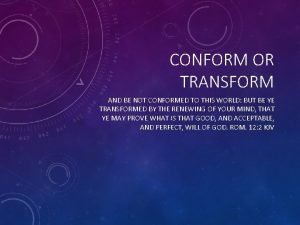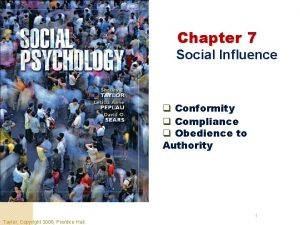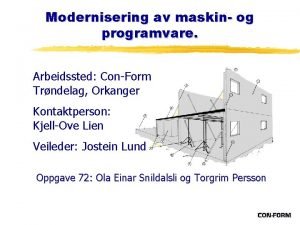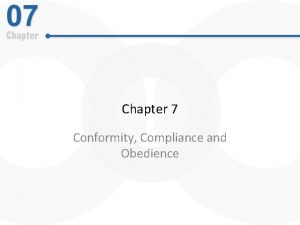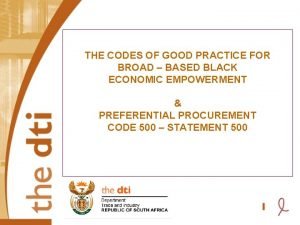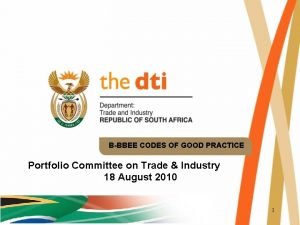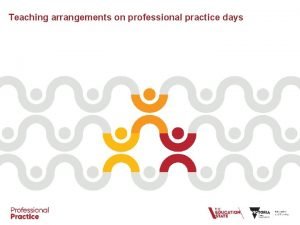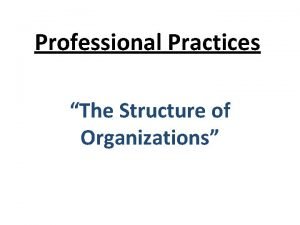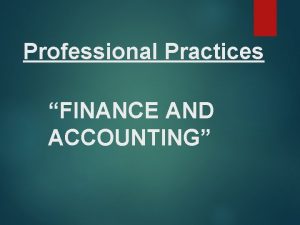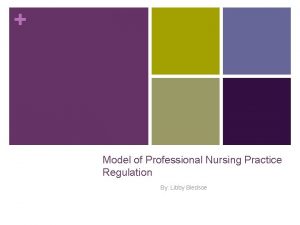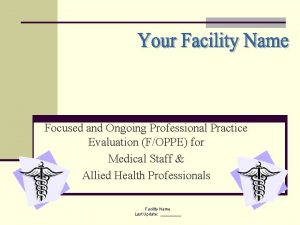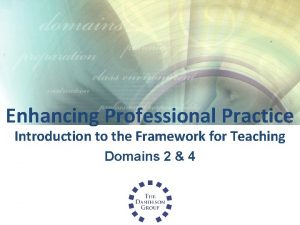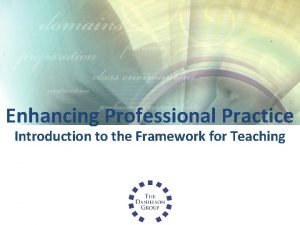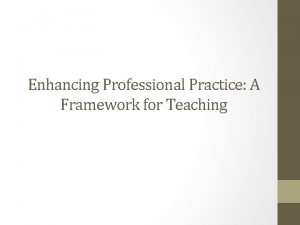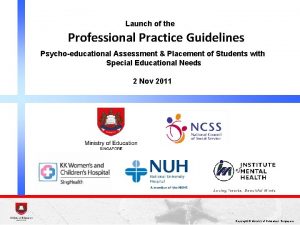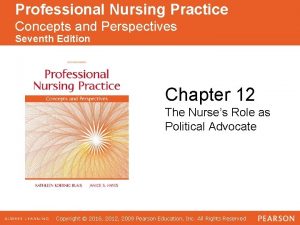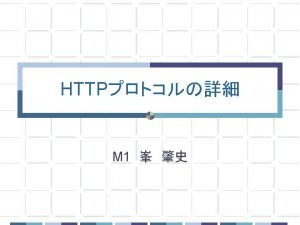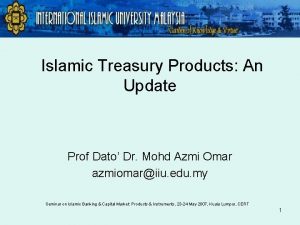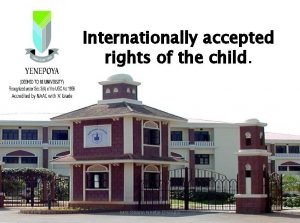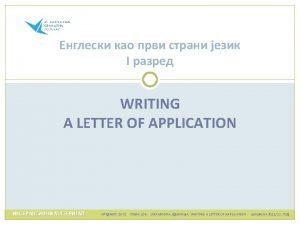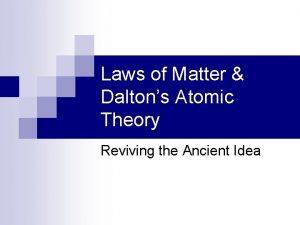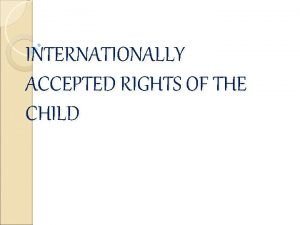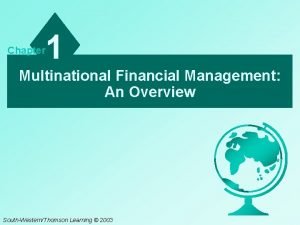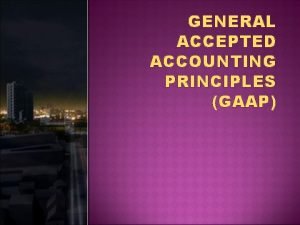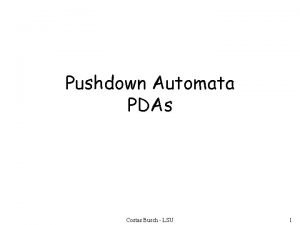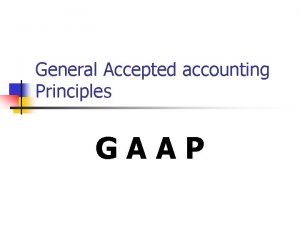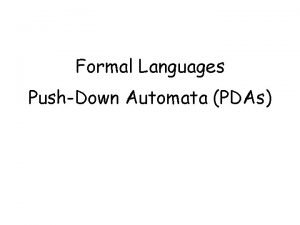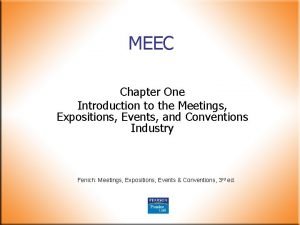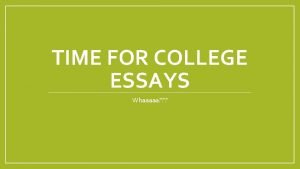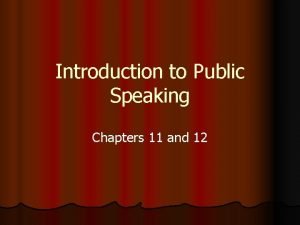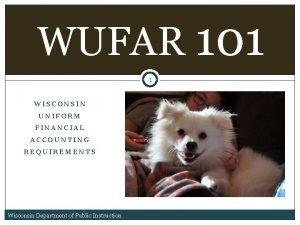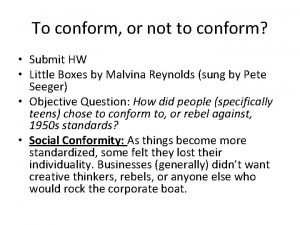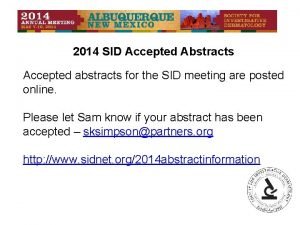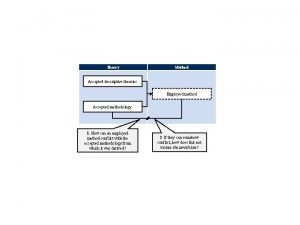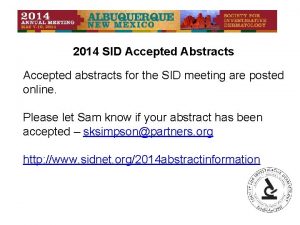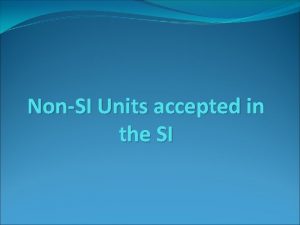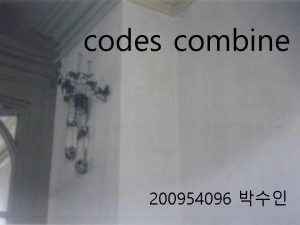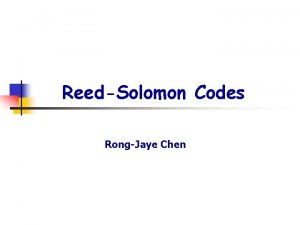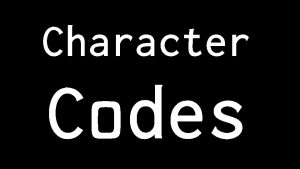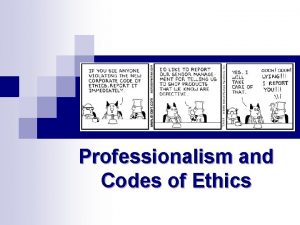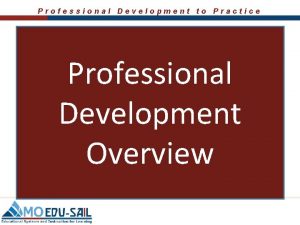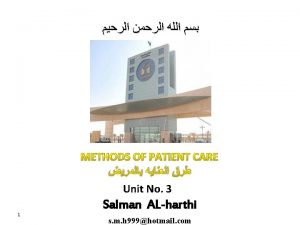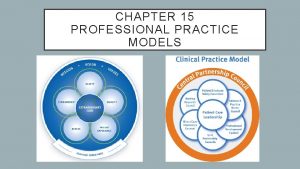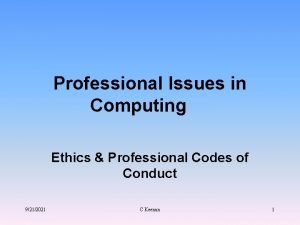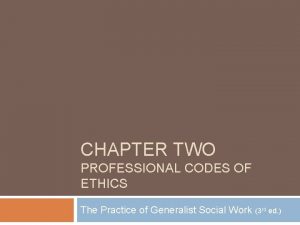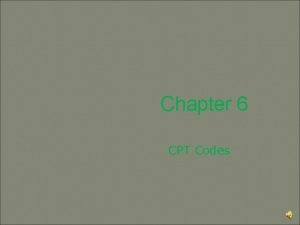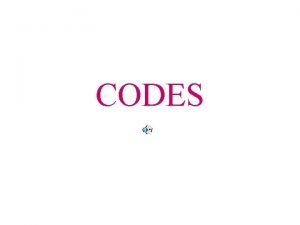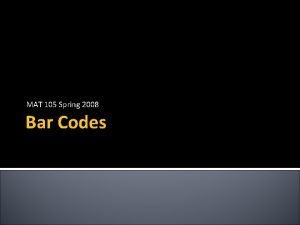Conform to accepted codes of professional practice LO










































- Slides: 42

Conform to accepted codes of professional practice

LO 3: conform to Codes of Professional Practice • They are expected to carry out an analysis of professional practice expectations and to identify any legal and statutory requirements. Finally they need to undertake a self assessment of their own behaviour against professional codes of practice.

Professional Practice expectations: • • Codes of Professional Practice Professional relationships Judgment concerning learner needs Role responsibilities within organisation’s role Contractual obligations Resource management Duties of care Confidentiality

Statutory Requirements • • Health Safety Security Privacy Copyright Data Protection Equal Opportunities Anti-Discriminatory Behaviour

Self Assessment: • • • Self Reflection Limits of own behaviour Strengths Weakness Development needs

Why Legal issues have a bearing on econtent • E-content is initiated by an author and fixed by a team of multi-media professionals • E-content may be used by several learners at different locations round the globe • Is easy to duplicate, and to disseminate at very little cost

Law provides the balance • The author needs recognition and reward for his creativity and innovation • The user needs to able to enjoy the products created by authors • Intermediaries are publishers, broadcasters and network service providers

Some laws that impact e-content • • Copyright Trademark Cheating Forgery Patent Theft Counterfeiting

What is TRIPS? • It is Annexure 1 c to the WTO agreement • A very detailed and comprehensive multilateral agreement • Covers most forms of intellectual property in a single agreement through negotiation

Inherent difference of TRIPS from the other agreements • IPR protecton is normally territorial in nature • TRIPS prevails upon nations to amend their national laws to conform to TRIPS • Provision for review under article 71. 1, because protection of IPR cannot be a goal, but the benefits of knowledge being available to the Society is the goal

The three-fold significance of TRIPS • Establishes minimum standards of protection for most important forms of IPR • Establishes standards for enforcement of those forms of IP by incorporating commitments regarding domestic procedures • Provides a binding enforceable dispute resolution mechanism

Basic Principles • The protection and enforcement of intellectual property rights should contribute to the promotion of technological innovation and to the transfer and dissemination of technology, to the mutual advantage of producers and users of technological knowledge and in a manner conducive to social and economic welfare, and to a balance of rights and obligations

TRIPS covers • Copyright and related rights • Trademarks including service marks • Geographical indications including appellation of origin • Industrial Designs • Patents • Layout-designs of integrated circuits • Undisclosed information

Enforcement mechanisms of IPR • CIVIL AND ADMINISTRATIVE PROCEDURES AND REMEDIES • Fair and Equitable Procedures • Evidence • Injunctions • Damages • Other Remedies • CRIMINAL PROCEDURES

Acquisition and maintenance of IPR • These may require compliance with reasonable procedure and formalities • Where there is a grant mechanism or registration process, this must happen in a reasonable time so as to avoid unwarranted curtailment of the period of protection • Review by a judicial or quasi-judicial authority of inter partes procedures

Arguments in support of TRIPS • Encourages local innovation • Technology transfer would be encouraged • FDI would increase

Views and arguments against TRIPS • Encourages monopolies • Monopolies will charge a higher price • Insistence on uniform duration

Who benefits from IPR protection? • • • Inventors Scientists Writers Artists Professionals Business Persons

Benefits from Copyright laws • • • Copyright laws encourage Literary works Computer programs Artistic works Expressions of national culture

Benefits from Patent laws • Encourage invention of new products • Pharmaceutical Industry • Software Industry

Benefits from Trademark laws • Encourage development of high quality products • Also of high quality services ( service mark) • Value from brand loyalty of customers

They who reap when they have not sown • Thieves • Pirates • Counterfeiters

Benefits of strong IPR protection • Stimulates innovation by providing an environment in which innovation is rewarded • Encourages development of lower cost methods of production and distribution of existing products • Invites introduction of new, safe and effective products, technology and services

Some more benefits • Develops in-country markets • Encourages transfer of Technology • Creates more jobs in both primary and supporting industries in the economy • Creates a higher quality and technically prepared labour force through on the job training associated with authorized transfers of technology

Focus on IPR issues in Education • Packaged education may be comparable with the pharmaceutical industry • Re-usable learning objects are patentable entities, because software is now patentable • l. MS, LCMS and authoring systems would all be patentable and protected

Industrial designs • Chairs • Classrooms • Studios • Learning kiosks

A quick Tour of IPR in the educational context • Names and logos of Institutes (Trademark and service marks) • Course syllabus • Course outlines, learning objectives • Questions, assignments, case studies • Essays, theme papers, project reports • Multi-media content • Should there be a concept of academic property/educational property

Who owns learning? • Learning is often a constructivist activity with both teacher and learner contributing • We are moving from a stage on the stage performer model to a guide by the side role as co-explorer • Can we restrict students on the ways that they can use the learning so required and how can we restrict its dissemination

Tools for the learner • • • Search Tools Navigation Tools Knowledge Validation Tools Expression tools Self-help tools

Tools for the teacher • • Authoring tools Assessing tools Personalisation tools Motivation tools Mentoring tools Simulation tools Game creation tools

Tools for managing an educational enterprise • Putting teachers and learners together • Putting in place a knowledge management system • Allowing teachers to communicate both synchronously and asynchronously with learners • Facilitating peer to peer interaction amongst faculty

Open courseware initiative • The prestigious MIT has put up a large amount of its courses on its website for use by anyone for educational purposes • MIT is spending a huge amount of money and expects this to help in the improvement of quality of education in the developing countries

Collective administration of copyright • A concept where management and protection of copyright is done by a society of owners of such works. • A copyright society with at least 7 members can be registered. Ordinarily one society is registered to do business in respect of the same class of work. • A copyright society can issue or grant license in respect of any work in which copyright subsists, or in respect of any other right given under the copyright Act.

Functions of a copyright society • 1. issue licenses in respect of rights administered by the Society • 2. Collect fees in pursuance of such licenses • 3. Distribute such fees among owners of copyright, after making deductions for administrative expenses

Coping with grey areas and uncertainties • • Issues in linking web-sites and web-pages Domain name, trade mark and brand values Peer to peer file transfer and Napster Plagiarism in online learning

Some important issues • • Digital Watermarks Digital signatures Password based protection for access Copyright Design Patents Performing Artists rights

Some vexing issues • • • Valuation of IPR Trademark or Educational Brands Courseware as software Learning transactions as co-owned IP Taxation issues in cross-border transactions

Other vexing issues about protection • Pathways to learning • Micro-level IP accumulation • Imperfectly developed/fixed IP • Machine assisted IP creation

Data Protection Act: Key Principles • Data may only be used for the specific purposes for which it was collected. • Data must not be disclosed to other parties without the consent of the individual whom it is about, unless there is legislation or other overriding legitimate reason to share the information (for example, the prevention or detection of crime). It is an offence for Other Parties to obtain this personal data without authorisation. • Individuals have a right of access to the information held about them, subject to certain exceptions (for example, information held for the prevention or detection of crime). • Personal information may be kept for no longer than is necessary and must be kept up to date.

Key Principles. . Continued • Personal information may not be sent outside the European Economic Area unless the individual whom it is about has consented or adequate protection is in place, for example by the use of a prescribed form of contract to govern the transmission of the data. • Subject to some exceptions for organisations that only do very simple processing, and for domestic use, all entities that process personal information must register with the Information Commissioner's Office. • Entities holding personal information are required to have adequate security measures in place. Those include technical measures (such as firewalls) and organisational measures (such as staff training). • Subjects have the right to have factually incorrect information corrected (note: this does not extend to matters of opinion)

Principles of Public Service and Ethics • service to the public • responsiveness to the government and the needs of the public • accountability • fairness and integrity • efficiency and effectiveness

Possible Consequences of a breach: • counselling • a written admonishment • a financial penalty • transfer to other duties (at or below current salary) • reduction in incremental point • a temporary or permanent reduction in classifi cation/salary • termination of employment
 It is to conform to accepted professional practice
It is to conform to accepted professional practice Why did rockwood refuse to conform to group pressure?
Why did rockwood refuse to conform to group pressure? Do not conform be transformed
Do not conform be transformed Confirm vs conform
Confirm vs conform Conform orkanger
Conform orkanger Conformity compliance and obedience
Conformity compliance and obedience Bee codes of good practice
Bee codes of good practice Bee codes of good practice
Bee codes of good practice Professional practice days
Professional practice days Structure of organization in professional practice
Structure of organization in professional practice Professional practice finance
Professional practice finance Professional nursing practice 7th edition
Professional nursing practice 7th edition What do you mean by professional
What do you mean by professional Model of professional nursing practice regulation
Model of professional nursing practice regulation Focused professional practice evaluation
Focused professional practice evaluation Enhancing professional practice
Enhancing professional practice Danielson 3c look fors
Danielson 3c look fors Tpess training
Tpess training Enhancing professional practice a framework for teaching
Enhancing professional practice a framework for teaching Professional practice guidelines moe
Professional practice guidelines moe Political astuteness in nursing
Political astuteness in nursing Islamic accepted bills
Islamic accepted bills 202 accepted
202 accepted Islamic accepted bills
Islamic accepted bills Internationally accepted rights of the child pdf
Internationally accepted rights of the child pdf Congratulations you are accepted
Congratulations you are accepted Dalton's atomic theory was accepted because
Dalton's atomic theory was accepted because Internationally accepted rights of child
Internationally accepted rights of child Im accepted i'm forgiven
Im accepted i'm forgiven Centralized multinational financial management
Centralized multinational financial management Altruism psychology
Altruism psychology In what century were negative integers finally accepted?
In what century were negative integers finally accepted? Generally accepted accounting principles adalah
Generally accepted accounting principles adalah Languages accepted by pda
Languages accepted by pda General accepted
General accepted Pda
Pda Cost benefit constraint in accounting
Cost benefit constraint in accounting Accepted practices exchange
Accepted practices exchange Brown accepted essays
Brown accepted essays Ocp contributions
Ocp contributions The accepted standard of sound and rhythm is
The accepted standard of sound and rhythm is Myeplg
Myeplg Wufar
Wufar


